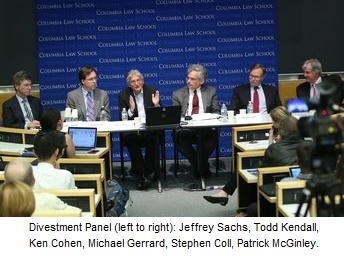By Ifeoma Anunkor, Summer Legal Intern
Carbon pollution harms the economy much more than the federal government previously estimated, according to the Interagency Working Group on Social Cost of Carbon. While researchers continue to look for ways to reduce carbon emissions without harming the economy, the new guidance on the social cost of carbon strengthens the argument that not reducing carbon emissions hurts the economy, and will render more carbon reduction policies cost-effective than has previously been the case.
Federal agencies are required by executive orders to perform a cost-benefit analysis on any intended regulations. The EPA and other agencies incorporate the social cost of carbon (SCC) into the analysis to show the climate benefits of rulemaking; in other words, that the social benefits of reducing carbon dioxide outweigh the costs. The SCC is defined as the monetized estimate of damages for the incremental increase in carbon emissions each year. Monetary damages approximate the costs of climate change caused by carbon pollution, including but not limited to changes in human health, ecosystems, flood and property damages, and diminished crops. Also incorporated are sea level rise and heat-wave damages.
The updated estimates for the SCC in 2015 (based on 2007 dollars) are $12, $38, $58, and $109 per metric ton of carbon dioxide, depending on the stringency of the discount rate applied. Those estimates represent over a 60% increase from last year’s, which were $5.70, $23.80, $38.40, and $72.80, respectively. The new estimates are based on the updated versions of the three assessment models the U.S. government uses to estimate the SCC. Changes to the models reflect an updated, more complex carbon cycle, a more explicit representation of global sea level rise, updated damage functions for sea level rise impacts, agricultural impacts and changes in temperature caused by GHG concentrations, and updated adaptation assumptions and potential abrupt damages.
So what are the implications of the new guidance on the SCC?
Government agencies will better account for the true cost of emitting carbon dioxide and benefit of reducing carbon emissions. This information will help to justify a range of more stringent governmental actions to regulate carbon. For example, higher numbers for the social cost of carbon can help spur increased energy efficiency standards. The new efficiency standard for microwaves that will go into effect in 2016 is the first to incorporate the updated social cost of carbon values. The Department of Energy is requiring new microwave oven models to use over 50 percent less energy while on stand-by mode. As a result of the new SCC estimates, the standard’s net benefit to society (which includes reduced electricity costs to families, and reduced social costs of conventional air pollutants) increases to $4.6 billion over the next 30 years, up from $4.2 billion in savings with the old SCC estimates.
The updated SCC provides the boost new environmental regulations need, because it significantly increases the amount of carbon reduction that can be economically justified. For instance, the EPA has recommended that the State Department incorporate a monetized SCC estimate to see if pipeline projects such as Keystone XL fail the cost benefit analysis test by emitting too much carbon dioxide. Other regulations like clean energy and energy efficiency mandates are also strengthened by the new SCC.
Information on the higher social costs of carbon can also be conveyed to consumers to encourage them to make the switch to energy-efficient products. Americans will save money by lowering their energy bills, while reducing greenhouse gas emissions.


